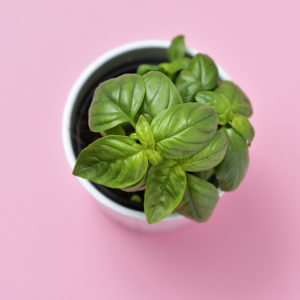Q. I finally planted several Jalapeño Peppers, and I’ve been pleasantly surprised at how well they have grown but disappointed that the flavor has been quite mild instead of hot. My wife thinks I picked them too soon. What do I need to do to increase the heat?
A. Your wife is correct. You’re harvesting the peppers too early. When mature, Jalapeño Peppers should be three-inches long and two-inches wide. The color will cycle from a green to a darker almost blackish- green color. Some varieties of hot peppers do turn a blackish-red. If left on the plant long enough, all the varieties will turn a red color. Red Jalapeños have a wonderfully sweet/hot taste. Once you think maturity has been reached, harvest a few and check their flavor. If the taste is suitable, then you’ll know you can pick the rest when they reach that stage. If they’re not quite spicy enough for you, wait a few more days and try again. You’ll need to keep trying the peppers at different stages until the taste suits you. The Scoville Heat Unit Scale measures the spicy heat or pungency of each pepper variety. This scale runs from twenty-five hundred to over a five million. Jalapeño Pepper is around ten thousand while the Ghost Pepper is over a million. Also, geography plays a role, as mature chili peppers are more intense the closer they’re grown to the equator. Hence, a mature Jalapeño Pepper growing in Orange County will be hotter than those in San Jose or Portland Oregon. Jalapeño Peppers sold locally are not being grown in the Bay Areas. They’re probably from Southern California or Mexico. If they continue to be too mild, then you should plant another more intense variety next year.
Note: When harvesting hot or chili peppers, you should carefully snap each pepper from the plant. Better yet, use a pair of sharp garden shears or scissors to cut the stem an inch or so above each pepper. It’s highly recommended to wear a pair of rubber gloves to protect your hands, especially those with nicks and cuts from any of the plant juices. Also, don’t touch your eyes for whatever reason as you will encounter severe and intense discomfort.
Q. I’m growing Basil in a planter, but it is being eaten alive, except I don’t see any bugs. My mother says it could be snails and gave me a roll of copper barrier tape to use to keep the snails out. Should the copper tape be wrapped all the way around the box? Would one of the soap products be a better solution?
A. Insecticidal Soap or any soap product is ineffective in controlling snails and slugs. Insecticidal Soap is an effective solution for controlling soft body, sucking insects such as Aphids, Mealybugs, Mites, and Scale. Also, it’s not recommended for controlling those insects or pests that chew holes in the leaves of plant(s) such as caterpillars, worms, or beetles. Insecticidal Soap is a contact spray, so the insects need to be present. They are safe to use on edibles because there is no residual left on the plants. So, you avoid spraying when no insects are visible. The copper barrier tape is a solution that stops the forward progress of snails and slugs, but it will not kill them. It should be wrapped all the way around the planter box to establish the barrier. You could place the tape under the lip of the planter, or any other inconspicuous location is preferable. Actually, the placement doesn’t matter. The copper barrier tape should last about two years before it deteriorates. A very long-term solution is Copper Plumbers Tape, available at most home improvement retailers. The planter has a better chance of falling apart before the copper tape needs to be replaced. Another option is Sluggo Plus, an environmentally friendly slug and snail bait that is safe to use around edibles. It would be applied to the soil. Slugs, Snails, and Earwigs consume the bait at night and then return to their habitat and die. Sluggo Plus is reapplied monthly.
Q. My White Alaskan Azalea has grown to be about three feet tall and about four feet wide. The white flowers cover the plant when it blooms. How do I prune it and still maintain the heavy blooming?
A. The best time to prune Azaleas is after they finish blooming. However, it still can be done now. You can shape the plant by trimming it lightly with a pair of hand shears or heavily with an electric trimmer. Pruning doesn’t interfere with the blooming cycle. It’s the size of the canopy that usually dictates the mass of color as Azaleas bloom on the current year’s growth. I wouldn’t expect you would see much new growth if you prune now. So the canopy size would be smaller than last year and so would be the mass of color. You could also consider waiting until next year to prune. I’d continue fertilizing with Azalea, Camellia, and Rhododendron Food to encourage the growth. This should be done monthly through October. Osmocote, a time release fertilizer, is another option. Osmocote releases a few nutrients with every watering, and you would apply it twice a year, four months apart.
Leave a Reply